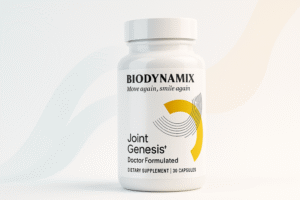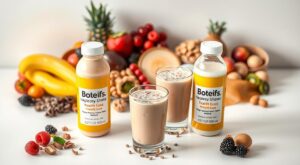Ever thought about how your diet could make your heart healthier? With so much info on nutrition, finding the right foods for your heart can be tough. This article will show you 15 heart-healthy foods backed by science. We’ll also talk about which foods to steer clear of for a healthier heart. Are you ready to change your diet for a healthier future?
Introduction to Heart Health and Diet
Your journey to better heart health starts with a balanced diet. The foods you choose affect your weight, blood pressure, cholesterol, and inflammation. These factors are key to a healthy heart. Eating the right foods can greatly lower heart disease risk.
Heart-healthy nutrition includes foods full of vitamins, minerals, and healthy fats. By picking the right foods, you can enjoy tasty meals that are good for you. Switching to a heart-healthy diet opens up new food discoveries that are both delicious and healthy.
Add fruits, vegetables, whole grains, and lean proteins to your meals. These foods are the base of a heart-friendly diet. Watch your portion sizes and how you cook to get the most benefits. A heart-healthy diet can make you feel better and may even add years to your life.
The Importance of a Heart-Healthy Diet
Adding a heart-healthy diet to your daily life can greatly improve your health. Eating a variety of foods for a healthy heart can lower your risk of heart disease. This is a big health issue in the United States. Foods like fruits, vegetables, whole grains, and healthy fats are good for your heart and overall health.
It’s important to choose healthy foods for your heart. Foods high in fiber, antioxidants, and omega-3 fatty acids are good for your heart. A heart-healthy diet helps keep your cholesterol levels right and reduces inflammation.
Knowing how food affects your heart is key to staying healthy. By eating a variety of foods for a healthy heart, you make choices that help you live a full and active life.
Understanding the Risk Factors for Heart Disease
Heart health is key, and knowing the risk factors is vital. Hypertension, high cholesterol, and obesity are major contributors. These factors can greatly affect your heart health. By understanding them, you can make better food choices for your heart.
Some foods can help lower blood pressure and cholesterol and reduce weight. Eating a diet rich in nutrients is a great step towards heart health. Here are some important points to remember:
- Hypertension: High blood pressure puts strain on the heart and blood vessels. Eating less sodium and more potassium-rich foods can help.
- High Cholesterol: Foods high in saturated fats can raise cholesterol levels. Choosing heart-healthy fats like those in avocados and nuts is better.
- Obesity: Keeping a healthy weight is essential for the heart. Whole grains, fruits, and vegetables are great for managing weight.
Knowing the risk factors for heart disease and how diet affects them can help you live a healthier life. Focus on adding good foods to your diet and cutting out bad ones for better health.
Leafy Green Vegetables: Nutritional Powerhouses
Leafy green vegetables like spinach, kale, and collard greens are nutritional powerhouses. They are full of vitamins and minerals that boost your health. Eating these greens helps keep your heart healthy and supports overall wellness.
Benefits of Vitamin K and Dietary Nitrates
Leafy greens are rich in vitamin K, which is key for artery health. This vitamin keeps your blood vessels flexible and working well. Greens also have dietary nitrates, like beets and spinach, which help lower blood pressure. Together, these nutrients are great for your heart.
Research Linking Greens to Heart Health
Many studies link eating leafy greens to better heart health. The American Heart Association found that eating these foods lowers heart disease risk. Adding leafy greens to your diet can lead to lasting health benefits.
Whole Grains: A Smart Choice for Heart Health
Whole grains are a great way to make your diet heart-healthy. They have all parts of the grain, including the bran, germ, and endosperm. This makes them a rich source of fiber and nutrients. Eating whole grains daily can lower your heart disease risk a lot.
Let’s look at why whole grains are better than refined carbs. We’ll also see how to spot them on labels.
The Advantages of Whole Grains Over Refined Carbohydrates
Whole grains are good for your heart in many ways:
- Rich in Fiber: They have more fiber than refined grains. This helps with digestion and keeps you at a healthy weight.
- Essential Nutrients: They give you important vitamins and minerals like iron, magnesium, and B vitamins. These are key for staying healthy.
- Lower Risk of Heart Disease: Studies show that eating whole grains often can lower heart disease risk.
How to Read Labels for Whole Grain Products
Finding whole grains can be tricky. Here are some tips for shopping:
- Search for “whole” before grains, like in whole wheat or whole oats.
- Check the ingredient list. Whole grains should be the first ingredient.
- Choose products with at least three grams of fiber per serving. This usually means they have more whole grains.
Berries: Antioxidant-Rich Superfoods
Berries are not only tasty but also full of antioxidants. Foods like blueberries and strawberries are rich in anthocyanins. These help reduce stress and inflammation in the body. Adding them to your meals can lower heart disease risks, making them great for heart health.
Reducing Risks with Anthocyanins
Anthocyanins give berries their deep colors. Studies show they improve heart health by:
- Lowering blood pressure
- Improving cholesterol levels
- Reducing inflammation and oxidative stress
Eating foods with anthocyanins can make your heart healthier. It may also boost your overall health.
Incorporating Berries into Your Diet
It’s easy and fun to add berries to your meals. Here are some heart-healthy recipes with berries:
- Berry Smoothie: Blend your favorite berries with yogurt or a milk alternative for a refreshing drink.
- Berry Salad: Toss mixed berries into a green salad with a light vinaigrette.
- Baked Oatmeal: Mix berries into oatmeal for a warm, nutritious breakfast.
By adding these fruits to your meals, you get to enjoy their health benefits and taste.

Avocados: Creamy and Heart-Friendly
Avocados are a tasty addition to your meals, full of good fats for your heart. They add flavor and give you important nutrients like potassium. This helps keep your blood pressure in check.
Studies show eating avocados can lower your cholesterol. They make your meals creamy and help your heart. You can add them to salads or smoothies for a tasty treat.
Adding avocados to your diet can really boost your health. Try them on toast or in salads. For more on how fats can help your HDL levels, check out this resource.
| Nutrient | Amount per Avocado | Health Benefit |
|---|---|---|
| Monounsaturated Fats | 15g | Reduces bad cholesterol |
| Potassium | 975mg | Maintains healthy blood pressure |
| Fiber | 10g | Promotes digestive health |
| Vitamin E | 2mg | Supports cardiovascular health |
Fatty Fish: The Omega-3 Powerhouses
Eating fatty fish can greatly boost your heart health. These foods, such as salmon and mackerel, are packed with omega-3 fatty acids. Omega-3s help lower bad cholesterol, reduce blood pressure, and cut down heart disease risk. Adding these fish to your meals is a tasty way to keep your heart healthy.
The Heart Benefits of Omega-3 Fatty Acids
Omega-3 fatty acids are key for a healthy heart. They fight inflammation, which is linked to many heart problems. Eating fatty fish can improve heart function and lower cholesterol. It may also reduce arrhythmias, helping your heart beat regularly. Including fatty fish in your diet can improve your heart health and provide important nutrients.
How to Include Fatty Fish in Your Meals
It’s easy to add fatty fish to your meals. Here are some simple ways to enjoy these nutritious fish:
- Grill or bake salmon with your favorite herbs and spices for a flavorful main dish.
- Prepare a fish taco night using grilled mackerel, cabbage, and avocado for crunchy texture.
- Mix canned salmon or sardines into salads or grain bowls for added protein and healthy fats.
- Try fish oil supplements if you struggle to include enough fat fish in your diet.
| Fatty Fish | Omega-3 Content (g per 100g) | Heart Health Benefits |
|---|---|---|
| Salmon | 2.3 | Improves heart function and lowers triglycerides |
| Mackerel | 4.5 | Reduces inflammation and lowers blood pressure |
| Sardines | 2.2 | Rich in vitamins and lowers heart disease risk |
| Trout | 2.0 | Helps maintain steady heart rhythm |
Adding fatty fish to your diet is both fun and good for your heart. With tasty recipes and easy ways to prepare, making healthy meals is simple.
Walnuts: A Nutrient-Dense Snack
Adding walnuts to your meals is good for your heart. They are full of healthy fats, vitamins, and minerals. These nuts are not only tasty but also great for your heart health.
Impact on Cholesterol and Blood Pressure
Studies show that eating walnuts regularly can improve heart health. They can lower bad cholesterol, which is linked to heart disease. Walnuts may also help lower blood pressure, making them a great snack choice.
Walnuts are easy to add to your diet. You can toss them in salads, yogurt, or just snack on them. Eating walnuts helps keep your heart healthy.

Beans: The Unsung Heroes of Heart Health
Adding beans to your meals is a smart move for heart health. They are packed with fiber and protein, making them great for your health. Eating beans often can lower LDL cholesterol, which helps prevent heart disease.
Beans are also super easy to add to many dishes. They can go into salads, soups, and stews. Their taste and texture make meals better and keep you feeling full. By using beans more, you help your heart and enjoy tasty, healthy food.
Dark Chocolate: A Delicious Heart-Healthy Treat
Dark chocolate is a tasty way to keep your heart healthy. It’s full of antioxidants and flavonoids. These can help lower blood pressure and improve blood flow. Picking the right dark chocolate is key to getting the most benefits while enjoying it.
Choosing the Right Dark Chocolate
When you’re looking for dark chocolate, make sure it has at least 70% cocoa solids. This means it has more flavonoids and less sugar, making it healthier. Also, choose dark chocolate with minimal processing. Here are some tips for picking the best dark chocolate:
- Cocoa percentage: Aim for 70% or higher.
- Sugar content: Lower sugar levels are preferable.
- Ingredient list: Look for few, recognizable ingredients.
- Fair Trade or Organic: Support quality sourcing when possible.
Remember, even healthy treats should be enjoyed in moderation. An ounce or two a few times a week is fine. Try different brands to find one you like.
| Brand | Cocoa Percentage | Sugar Content (grams) | Notable Ingredients |
|---|---|---|---|
| Lindt | 70% | 7 | Cocoa, almond, vanilla |
| Green & Black’s | 85% | 6 | Cocoa mass, sugar, vanilla |
| Ghirardelli | 72% | 8 | Cocoa beans, cocoa butter, sugar |
| Alter Eco | 70% | 5 | Cocoa liquor, coconut sugar, salt |
Tomatoes: A Tasty Source of Lycopene
Tomatoes are more than just a colorful addition to your salad. They are a powerhouse of nutrients and rank high among heart-healthy foods. One of their standout components is lycopene, a powerful antioxidant. Research suggests it may help lower your risk of heart disease.
Regularly including tomatoes in your diet can positively impact your blood lipid profiles. This promotes better heart health.
Vibrant and versatile, tomatoes can be enjoyed in numerous ways. This makes it easy to incorporate them into your meals. Here are some delicious ideas:
- Add sliced tomatoes to your favorite sandwich or wrap.
- Prepare a fresh tomato salad with herbs and olive oil.
- Use them as a base for sauces to flavor pasta and stews.
- Blend them in a smoothie for a unique twist.
Cooking tomatoes can actually enhance the bioavailability of lycopene. This allows your body to absorb it more effectively. Consider roasting or sautéing them for a delicious and nutritious side dish.

By making tomatoes a regular part of your meals, you take a significant step towards a healthier heart. Their sweetness and acidity not only add flavor. They also offer substantial health benefits that contribute to your overall wellness.
Almonds: Tiny Nuts with Big Benefits
Almonds are packed with nutrients like fiber, protein, and healthy fats. They are tiny but mighty, helping to improve heart health. Eating almonds regularly can lower cholesterol levels, which is good for your heart.
But, it’s important to eat almonds in the right amount. They have a lot of calories, so eating too much can lead to weight gain. Knowing how much to eat can make adding almonds to your diet easy and enjoyable.
Portion Control for Pristine Health
To get the most health benefits from almonds without eating too much, follow these tips:
- Start with a small handful, about one ounce or 23 almonds.
- Mix them into your oatmeal or yogurt for added texture and nutrition.
- Use almonds as a crunchy topping for salads or soups.
- Incorporate ground almonds into smoothies for a nutritious boost.
These tips help you enjoy almonds’ health benefits while keeping your diet balanced. Remember, eating them in moderation is key.
Chia Seeds, Flaxseeds, and Hemp Seeds: Nutrient Triad
Chia seeds, flaxseeds, and hemp seeds are superfoods for your heart. They are small but full of omega-3 fatty acids, fiber, and nutrients. Adding them to your meals makes food taste better and helps your heart.
Chia seeds are great for your heart because of their omega-3s. Flaxseeds help lower cholesterol with their fiber. Hemp seeds give you all the amino acids your body needs.
It’s easy to add these seeds to your meals. Sprinkle chia seeds on oatmeal or mix ground flaxseeds into smoothies. Use hemp seeds in salads or as a topping. These seeds make your food delicious and keep your heart healthy.
Garlic: A Flavorful Heart Health Ally
Garlic is a top choice for heart-healthy foods because of allicin. This compound is key for heart health. Eating garlic regularly can help lower blood pressure and improve cholesterol.
This herb makes food taste great and offers health perks. Raw garlic is best for heart health, studies say. You can add it to salads or cook it with veggies.
Garlic does more than just add flavor. It can also improve heart health by affecting cholesterol and triglycerides. Adding garlic to your diet can be a natural way to boost heart health. Learn more about garlic’s benefits here.

Olive Oil: A Staple for Heart-Healthy Cooking
Olive oil is key for heart-healthy cooking. It’s full of monounsaturated fats that help keep cholesterol levels healthy. It also has antioxidants that fight inflammation. Adding it to your meals can boost your heart health.
Drizzling olive oil over salads is a great way to enjoy it. Mix it with balsamic vinegar and herbs to make a tasty vinaigrette. This not only tastes good but also adds more nutrients to your salad.
Using olive oil for sautéing veggies is another smart move. It keeps the nutrients in your veggies and adds a rich flavor. Try to use it at lower temperatures to keep its health benefits.
Olive oil is also great for baking. You can swap it for butter or other fats in many recipes. It makes your baked goods moist and adds a heart-healthy twist without losing flavor.
To make the most of olive oil, try it in different dishes:
- Use it as a base for marinades for meats or fish.
- Drizzle it on warm bread for a healthy snack.
- Add it to smoothies for a creamy texture and extra nutrition.
Using olive oil in your cooking can make your meals more nutritious and tasty. It adds flavor and helps your heart health.
Edamame: The Protein-Rich Snack
Edamame, young soybeans picked before they’re fully grown, is a tasty and nutritious snack. It’s packed with protein and fiber, making it great for your heart. Eating edamame can help lower cholesterol levels.
Edamame is also rich in iron, calcium, and folate. It’s a top choice for a healthy snack. You can enjoy it steamed, boiled, or in salads and stir-fries. It adds crunch and flavor to any dish.
To get the best taste out of edamame, keep it simple. A squeeze of lemon juice or a sprinkle of sea salt works wonders. This healthy snack is a better choice than many others, perfect for any time.
| Nutritional Component | Per 1 cup (155g) of Edamame |
|---|---|
| Calories | 189 |
| Protein | 17g |
| Fiber | 8g |
| Fat | 8g |
| Carbohydrates | 14g |
| Iron | 3.5mg |
Adding edamame to your snacks can boost your heart health and overall health. Its delicious taste and high nutritional value make it a must-have for a heart-healthy diet.
Green Tea: A Steeping Tradition for Heart Health
Green tea is more than a drink; it’s packed with nutrients that boost heart health. Studies show it can lower cholesterol and improve heart function. Drinking five cups a day can be very beneficial.
Large studies from Japan found that drinking at least four cups of green tea daily lowers stroke risk. This shows how a simple habit can greatly benefit your heart. Plus, green tea is low in calories, making it a healthy choice for staying hydrated.
Adding green tea to your daily routine is simple and fun. Try having it in the morning or as an afternoon pick-me-up. Learn more about green tea’s heart health benefits here: green tea health benefits. By doing so, you’re improving your heart health.













